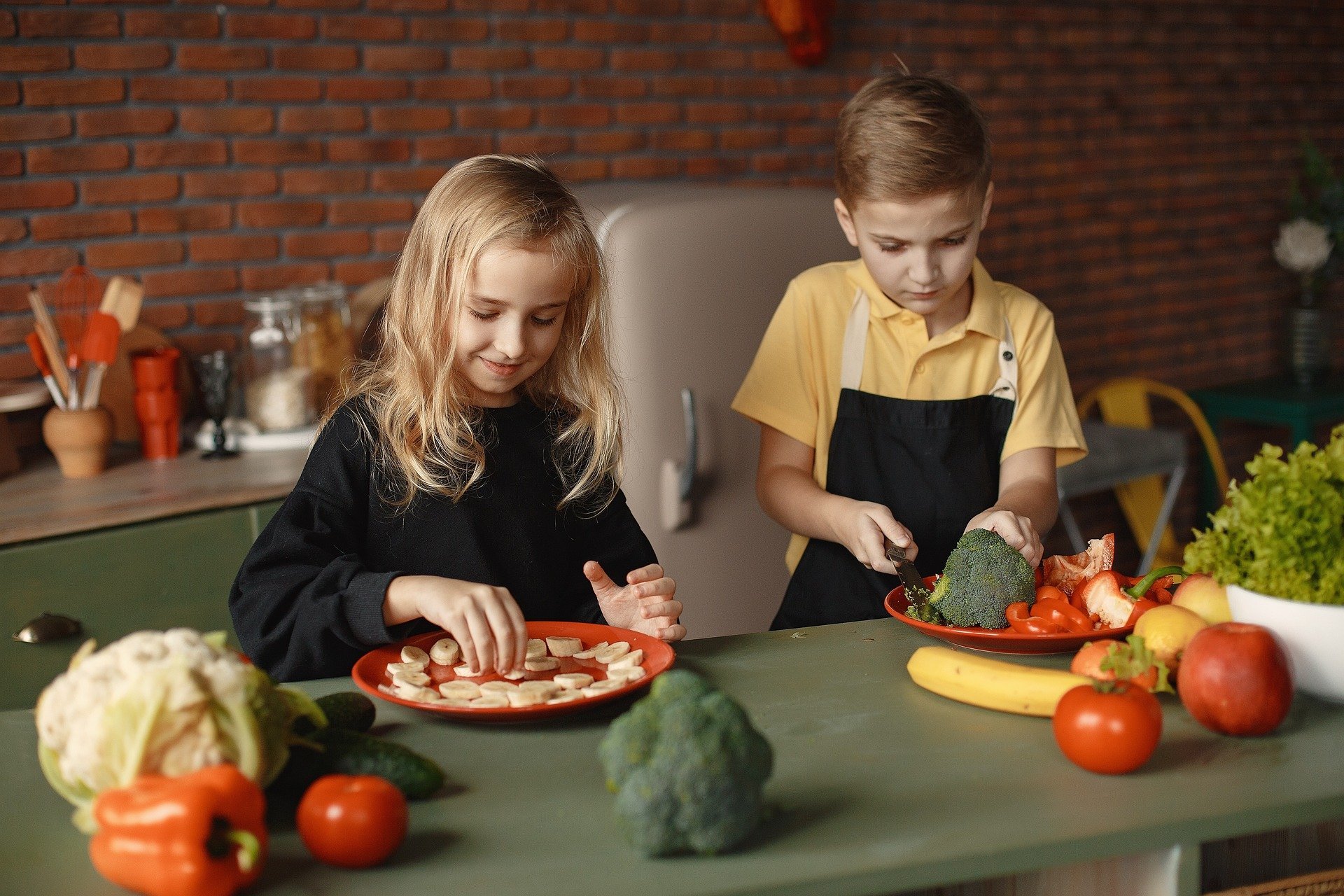Are you a parent struggling to get your toddler to eat more vegetables? Do you dream of the day when your little one excitedly crunches on carrot sticks instead of tossing them to the dog? Fear not, fellow parents! You’re not alone in this culinary quest. With a little creativity, patience, and persistence, you can turn your vegetable-averse toddler into a veggie-loving munchkin, making mealtime more enjoyable for the entire family.
In this blog post, we will take a deep dive into the colorful world of vegetables and explore various ways to sneak them into your toddler’s meals, present them in a fun and engaging manner, and highlight the importance of modeling healthy eating habits. We’ll also discuss the benefits of involving your little one in meal preparation, offering a variety of vegetables, and maintaining consistency in encouraging healthy eating. By the end of this post, you’ll have a treasure trove of ideas and strategies to help your toddler eat more vegetables and develop a lifelong love for healthy foods.
But before we embark on this green adventure, let’s take a moment to appreciate the Herculean task you’ve taken on as a parent. Toddlers are notoriously picky eaters, and it can feel like an uphill battle trying to introduce new foods into their diets. Rest assured, your determination and creativity will pay off, and your child’s taste buds will eventually come around to appreciate the rainbow of flavors that vegetables have to offer.
Now, buckle up and get ready for a whirlwind tour of tips, tricks, and tasty tactics designed to help your toddler eat more vegetables. From sneaky purees to playful presentations, we’ve got you covered. You’ll be armed with an arsenal of ideas that will have your child munching on veggies in no time, and you may even find yourself rediscovering the joy of vegetables along the way.
So, let’s embark on this journey together, and before you know it, your little one will be asking for seconds on those Brussels sprouts!
TLDR
- Sneak veggies into meals by incorporating them into dishes like smoothies, sauces, or baked goods.
- Present vegetables in fun and engaging ways, such as using colorful plates, creating shapes or characters, and offering interactive options like dipping sauces.
- Model healthy eating habits by consuming a variety of vegetables yourself and maintaining a positive attitude during mealtime.
- Involve your toddler in meal preparation, from shopping for vegetables to helping with washing, prepping, and cooking.
- Offer a variety of vegetables to ensure your toddler gets a range of nutrients and develops a diverse palate.
- Maintain consistency by regularly exposing your toddler to vegetables and establishing routines that include them.
- Encourage your toddler to try new foods by making it fun, starting small, offering choices, and combining favorites.
- Be patient when dealing with picky eaters, focusing on successes and avoiding forceful feeding.
- Remember that patience, persistence, and creativity are essential for helping your toddler develop healthy eating habits.
- Turn to reputable sources for guidance, such as the American Academy of Pediatrics and the Centers for Disease Control and Prevention, and connect with other parents for support and advice.
Creative ways to sneak veggies into meals
Getting toddlers to eat more vegetables can sometimes feel like a covert operation, but don’t worry, we’ve got your back with some top-secret tactics! Here are some creative ways to sneak veggies into your little one’s meals, leaving them none the wiser:
- Puree Power: One of the easiest ways to incorporate vegetables into your toddler’s meals is to puree them and add them to their favorite dishes. Blend veggies like carrots, spinach, or zucchini into pasta sauce, mac and cheese, or even pizza. The pureed veggies will not only add a nutritional punch but also enhance the flavors of the dishes.
- Smoothie Operator: Smoothies are a fantastic way to get your toddler to consume more vegetables. Blend leafy greens like spinach or kale with their favorite fruits, yogurt, and a little honey for a tasty, nutritious snack. The sweetness of the fruits will mask the taste of the veggies, making it a win-win for both of you!
- Muffin Magic: Vegetables can be baked into muffins, pancakes, or bread for a hidden yet healthy treat. Grated zucchini or carrots can be added to your regular muffin mix, and sweet potato or pumpkin puree can be incorporated into pancakes. These veggie-infused baked goods are perfect for breakfast or an on-the-go snack.
- Sneaky Soups: Pureed vegetable soups are another excellent way to get your toddler to eat more vegetables. You can make a delicious, creamy soup by blending cooked vegetables like cauliflower, broccoli, or butternut squash with some chicken or vegetable broth. Serve it with a sprinkle of cheese and some crusty bread for a warming, nutritious meal.
- Finger Food Finesse: Toddlers love finger foods, so why not use that to your advantage? Create veggie-packed finger foods like zucchini fries, sweet potato tots, or veggie nuggets. These tasty treats will be a hit with your little one, and they’ll be eating more vegetables without even realizing it!
Fun ways to present veggies to your toddler
Sometimes, all it takes to get your toddler to eat more vegetables is a little presentation magic. Here are some fun ways to present veggies that will make your little one more likely to give them a try:
- Rainbow on a Plate: Arrange colorful vegetables in the shape of a rainbow on your toddler’s plate. This visually appealing presentation can entice them to try a variety of veggies, and they’ll be more inclined to eat what they find visually appealing.
- Veggie Characters: Get creative and use vegetables to make fun characters or scenes on your child’s plate. Think cucumber caterpillars, bell pepper boats, or broccoli trees! This playful presentation can make mealtime more exciting and interactive for your toddler.
- Dip It: Toddlers love to dip their food, so serve raw or lightly steamed veggies with a healthy dip like hummus, yogurt, or a homemade ranch dressing. Dipping can make eating vegetables more enjoyable and less intimidating for your little one.
- Veggie Skewers: Put a fun twist on vegetables by threading them onto skewers or toothpicks. You can mix and match different veggies or combine them with fruits and cheese for a visually appealing and tasty treat. Just make sure to supervise your toddler while they’re eating to prevent any choking hazards.
- Edible Art: Encourage your toddler to get creative by making edible art with their vegetables. Provide them with a variety of veggies and let them create their own masterpieces on their plates. This hands-on activity can make trying new vegetables more fun and appealing.
- Themed Meals: Make mealtime even more fun by creating themed meals based on your toddler’s favorite characters or interests. For example, you could have a “Superhero Veggie Day” with super-powered veggie dishes or a “Princess Veggie Tea Party” with dainty veggie finger sandwiches. This can make trying new vegetables more appealing and exciting for your little one.
- Storytime at the Table: Weave a tale around the vegetables you’re serving to pique your toddler’s interest. For instance, you could tell a story about how the carrots are magical wands that will give them the power to see in the dark, or how the peas are actually tiny green gems from a faraway land. Engaging your child’s imagination can help make vegetables more intriguing and fun to eat.
Remember, the key to getting your toddler to eat more vegetables is to be patient, persistent, and creative. It may take some time and several attempts before your little one warms up to a new vegetable, but don’t give up. Keep trying different methods of preparation and presentation, and eventually, you’ll find something that works. With a little effort and a lot of love, you’ll be well on your way to raising a veggie-loving toddler who will carry these healthy habits into adulthood.
The importance of modeling healthy eating habits for your toddler
Children learn by example, so it’s essential to model healthy eating habits for your toddler. If they see you enjoying vegetables, they’ll be more likely to give them a try. Here are some ways to set a positive example for your little one:
- Eat Your Veggies: Make sure you’re eating a variety of vegetables at every meal. Show your toddler that you enjoy them, and talk about how good they taste and how they help keep you strong and healthy.
- Family Mealtime: Eating together as a family can help reinforce healthy eating habits. Make sure to include vegetables at every meal and encourage everyone to try them. This can create a positive environment for your toddler to develop a love for vegetables.
- Be Adventurous: Try new vegetables and different preparations regularly. Show your toddler that it’s fun to explore new foods, and they’ll be more likely to follow suit.
- Stay Positive: It’s important to stay positive and patient while encouraging your toddler to eat more vegetables. Avoid negative comments about their eating habits or forcing them to eat something they don’t want. Instead, focus on praising their efforts and celebrating their successes.
How to involve your toddler in meal preparation
Involving your toddler in meal preparation can make them more interested in trying new vegetables. Here are some fun and age-appropriate ways to get your little one involved in the kitchen:
- Shopping Together: Take your toddler to the grocery store or farmer’s market and let them help pick out the vegetables. Encourage them to choose a variety of colors and textures to create a visually appealing meal.
- Washing and Prepping: Allow your toddler to help wash and prepare the vegetables for cooking. They can use a child-safe knife to cut soft vegetables like cucumbers or bell peppers or tear lettuce for a salad.
- Cooking Together: Depending on their age, your toddler can help stir, pour, or measure ingredients while you cook. This hands-on involvement can make them more excited to try the finished product.
- Plating and Presentation: Let your toddler help arrange the vegetables on their plate or create fun designs with the food. This can make the meal more visually appealing and enticing for them to try.
- Praise Their Efforts: Be sure to praise your toddler for their help in the kitchen and their willingness to try new vegetables. Positive reinforcement can go a long way in encouraging them to develop healthy eating habits.
By involving your toddler in meal preparation, you’re not only teaching them valuable life skills but also fostering a sense of ownership and pride in the meals they create. This can lead to a greater willingness to try new vegetables and a more positive attitude towards healthy eating.
The benefits of offering a variety of vegetables to your toddler
Introducing a variety of vegetables to your toddler can have numerous benefits. Not only does it help expand their palate and encourage healthy eating habits, but it also provides essential nutrients for their growth and development. Here are some reasons why offering a variety of vegetables is crucial:
- Nutritional Diversity: Different vegetables provide different nutrients, so it’s essential to offer your toddler a wide variety to ensure they’re getting all the vitamins, minerals, and antioxidants they need for optimal health.
- Developing Taste Preferences: Exposing your toddler to various vegetables early on can help them develop a taste for these nutritious foods, making it more likely they’ll continue to enjoy them as they grow older.
- Preventing Food Boredom: Offering a variety of vegetables can help prevent food boredom, which can sometimes lead to picky eating habits. When your toddler has an array of colorful, tasty options to choose from, they’ll be more likely to try new foods and maintain a healthy diet.
- Encouraging Culinary Curiosity: A diverse vegetable selection can help your toddler develop an interest in cooking and trying new recipes, which can encourage a lifelong love for healthy eating.
The role of consistency in encouraging healthy eating habits
Consistency plays a crucial role in helping your toddler develop healthy eating habits, especially when it comes to consuming more vegetables. Here’s how you can maintain consistency in your efforts:
- Regular Exposure: Offer your toddler a variety of vegetables at every meal, even if they don’t eat them initially. Repeated exposure can help familiarize them with the taste and texture of different vegetables, making them more likely to try and eventually enjoy them.
- Establish Routines: Create mealtime routines that include vegetables, such as having a salad with dinner or enjoying a veggie-packed snack after naptime. Consistent routines can help your toddler understand that vegetables are a regular part of their diet.
- Be Persistent, But Patient: It’s essential to be persistent in offering vegetables to your toddler but also to be patient with their progress. It can take multiple exposures before they’re willing to try a new vegetable, so don’t get discouraged if they don’t take to it right away.
- Reinforce Positive Behavior: Praise your toddler when they try new vegetables or eat a healthy meal. Positive reinforcement can help encourage them to continue making healthy choices and trying new foods.
- Lead by Example: As mentioned earlier, modeling healthy eating habits is crucial in encouraging your toddler to eat more vegetables. Consistently include vegetables in your meals and demonstrate your enjoyment of them to set a positive example for your little one.
By maintaining consistency in offering a variety of vegetables and establishing healthy eating routines, you can create a supportive environment that encourages your toddler to develop a love for these nutritious foods. With patience and persistence, you’ll be well on your way to raising a veggie-loving child.
Encouraging your toddler to try new foods
Helping your toddler become more adventurous with their food choices can be a key factor in getting them to eat more vegetables. Here are some strategies to encourage your little one to try new foods:
- Make It Fun: Turn trying new vegetables into a fun game or challenge. For instance, you could create a “Veggie Passport” and have your toddler collect stamps or stickers for every new vegetable they try.
- Start Small: Introduce new vegetables in small, manageable portions. This can help reduce any overwhelm or intimidation your toddler may feel when faced with an unfamiliar food.
- Offer Choices: Instead of dictating which vegetables your toddler should eat, offer them a choice between two or three options. This can give them a sense of control and make them more likely to try something new.
- Combine Favorites: Pair a new vegetable with a favorite food to make it more appealing. For example, serve a new veggie alongside a beloved protein or add it to a favorite dish.
- Encourage Exploration: Allow your toddler to touch, smell, and even play with new vegetables before trying them. This can help familiarize them with the food and make them more comfortable with the idea of eating it.
The importance of patience when dealing with picky eaters
Dealing with a picky eater can be frustrating, but it’s essential to remain patient and understanding throughout the process. Here are some tips for maintaining patience while working to expand your toddler’s vegetable repertoire:
- Don’t Force It: Forcing your toddler to eat something they don’t want can create a negative association with that food. Instead, continue to offer the vegetable without pressure, and they may eventually come around to trying it.
- Keep It Positive: Focus on the successes your toddler has with trying new vegetables, rather than dwelling on their picky eating habits. Celebrate each small victory and maintain an encouraging atmosphere during mealtime.
- Be Realistic: It’s important to have realistic expectations when it comes to your toddler’s eating habits. Remember that it’s normal for them to be cautious about trying new foods and that their preferences may change over time.
- Stay Consistent: As mentioned earlier, consistency is key in encouraging your toddler to try new vegetables. Keep offering a variety of options and maintain a positive attitude, even when progress may seem slow.
- Remember You’re Not Alone: Many parents struggle with picky eaters, so remind yourself that you’re not alone in this journey. Reach out to friends or online communities for support and advice, and remember that patience is crucial for helping your toddler develop a love for vegetables.
By remaining patient and understanding, you can create a supportive environment that encourages your toddler to try new vegetables and develop healthy eating habits that will last a lifetime.
Final Thoughts
Getting your toddler to eat more vegetables can be a challenging, yet rewarding journey. By employing creative ways to sneak veggies into meals and presenting them in fun and engaging ways, you can make vegetables more appealing to your little one. Remember the importance of modeling healthy eating habits, involving your toddler in meal preparation, and offering a variety of vegetables to ensure they’re getting all the essential nutrients they need.
Consistency and patience are key when it comes to encouraging your toddler to try new foods and develop healthy eating habits. Celebrate their successes, maintain a positive attitude, and remember that you’re not alone in this journey. With time, persistence, and a little creativity, you’ll be well on your way to raising a veggie-loving child who will carry these healthy habits into adulthood.




